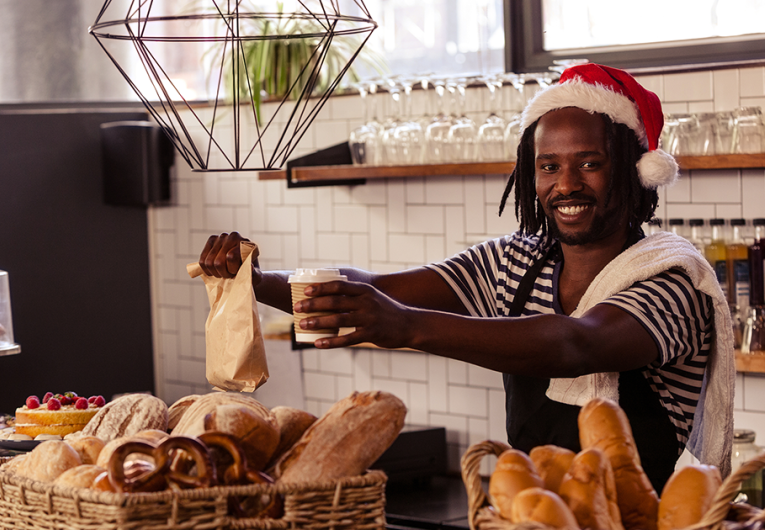
Changes in Consumer Behavior Create Opportunities for Small Business Growth
The ability to adapt to sudden changes has been a recurring theme during this past year. This sentiment likely resonates especially with small business owners, where change has been a near-constant.
In its webinar about trends in shifting consumer behavior, Hanover Research, a firm specializing in market research and analytics, discussed a silver lining to the disruption caused by the pandemic: the ability to create growth opportunities.
As we start planning for the next year, now is the time to reflect on the changes the pandemic has brought forth in consumption patterns and what businesses should do to ensure their path forward. These four key trends identified by Hanover Research in its report may help give small businesses a boost for the coming year.
Trend No. 1: The disruption caused by the pandemic is creating growth opportunities.
At the onset of the pandemic, the economic shutdown caused an impact to supply and demand as consumers engaged in panic buying, which led to the disruption of the supply chain. Due to the lack of availability of their favored brands, consumers tried new ones instead. This inadvertently allowed other, not as popular brands, to increase their market share and customer base.
- In-person shopping for essential and non-essential products fell by 18% in favor of online shopping.
- More than one-third of consumers tried a new brand when their old one failed to meet their needs.
The outlook is optimistic for emerging brands as the pandemic was a chance for them to build brand loyalty. To help, 94 percent of emerging brands are focusing more on consumer needs compared to 68 percent of established brands. The key for established brands is to pay attention to the changing consumer needs and adapt quickly. While brand loyalty remains high at 72 percent, the report shared that more than half of consumers tried a new brand and liked it during the pandemic.
“Consumers are still willing to go to the store for their essential purchases but most are staying home to purchase non essential stuff online,” according to the report.
“Consumers are still willing to go to the store for their essential purchases but most are staying home to purchase non essential stuff online.” – Hanover Research, ‘2021 Trends in Shifting Consumer Behavior.’
Trend No. 2: Brands gain critical consumer insights with D2C marketing
One of the biggest trends is the growth of the direct-to-consumer (D2C) channel, which saw a dramatic increase in sales.
According to eMarketer, D2C ecommerce sales are predicted to have a compound annual growth rate of about 14.2 percent per year, reaching $21.25 billion by the end of the year.
Besides foregoing third-party sellers, D2C brands have the benefit of controlling their transactions with their customers and can access data easily to better understand their needs. This is critical when it comes to building brand loyalty. According to Hanover Research, D2C businesses are more likely to gather consumer feedback regularly and consider social media as a valuable form of customer feedback.
Trend No. 3: Brands need to adjust to changing consumer channels, habits, and values
The pandemic has certainly brought about a shift in behaviors and preferences, some of which may be permanent.
“Even in the most certain of economic times, retention requires adapting to changing consumer needs and recognizing that not all consumers share the same preference or behavior profiles,” according to the Hanover Research report.
The report examined three groups of shoppers – millennials and Gen Zers, Generation X and baby boomers to determine what differences there are in where, what and how they shopped, along with their values.
Some of the findings of the survey include:
- Younger shoppers (ages 18-34) are most likely to try out a new brand if their old one doesn’t meet their needs.
- The number of Gen Xers (ages 35-54) who shopped on Amazon increased by 80 percent during the pandemic shoppers, but are likely to return to in-person shopping once things return to normal. Gen Xers are also open to trying new brands or products, provided that they are offered it through their preferred way of shopping.
- Baby boomers (ages 55+) are the least likely group who are willing to try new brands or purchase channels. In-person shopping remains their preferred way to shop, citing convenience as the reason.
By understanding what consumers now value and where and how they tend to shop, businesses may be able to leverage these differences in their target consumer segments to better connect with customers and prospects.
Trend 4: Insight into changing consumer needs to guide product development
By leveraging their relationships with customers, businesses will be better positioned to gain the insight needed on the changing consumer needs and integrating them into product development. The purpose here is to remain pertinent and competitive.
According to data collected by Hanover Research, some of the changes in consumer needs due to the pandemic included:
- Two-thirds stated they were more price-conscious
- 45 percent say they have new needs or uses for products
- 38 percent of consumers now value different attributes
Nonetheless, customer feedback in product development doesn’t seem to be a priority for some businesses. More than a quarter of brands fail to request for customer feedback at least once a year to guide product development efforts.
The trends, insights, and solutions you need to grow your business.
By signing up, you’re subscribing to our monthly email newsletter, The
Wire. You may unsubscribe at any time.
Your information stays safe with us. Learn more about our privacy
policy.











![[#MSP_NAME#] Logo](/themes/sparklight_business/images/transition-logos/migration-banner-logo-[#MSP_CD#].png)
